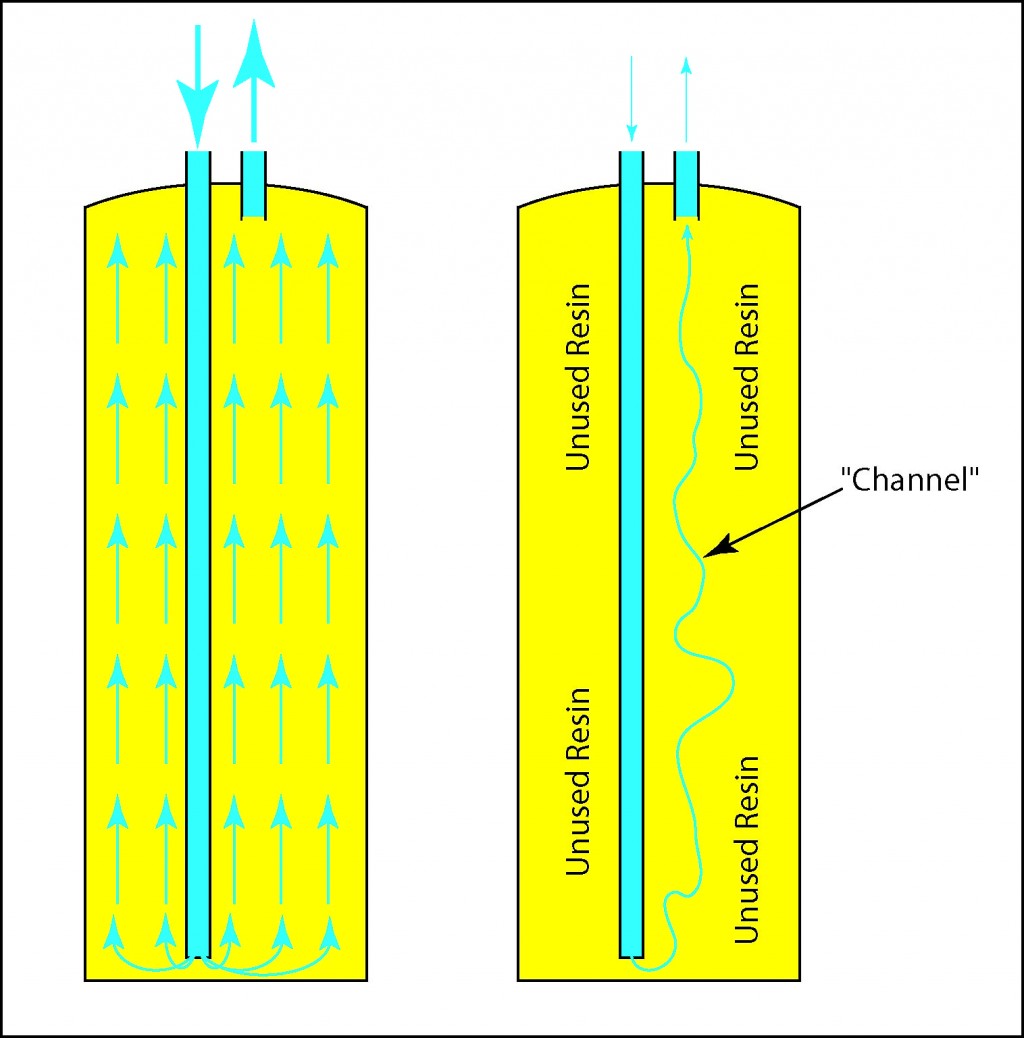This blog includes hints on ways to improve the quality and reduce the cost of de-ionized water. Those who use DI water in their processes know that the cost of DI water can be a major contributor to the overall cost of a process. The proper design and maintenance of a DI water system is not difficult and may result in a considerable savings.

Above is a schematic diagram of a typical multi-stage de-ionization system as has been described in proceeding blogs. Proper function of the system requires periodic replacement or re-generation of resins and activated carbon used in the various stages of the de-ionization process. Since replacement or re-generation of these essential materials is costly, it is logical that their maximum utilization is a major concern.
“Channeling” of the resin beds is one of the things that can significantly reduce their life. Channeling occurs when water passing through the resin in a canister naturally defines and follows a singular path through the resin rather than flowing in a laminar fashion as it should for maximum utilization of the resin. When channeling occurs, only a small portion of the resin actually reacts with the water passing through the system.

Channeling is most likely to occur when the flow rate through a canister is significantly lower than the flow rating for the canister. This may occur when there is an attempt to reduce DI water cost by reducing flow (into a rinse for example) to a “trickle.” In this case the possible benefit achieved by reducing flow may, in the end, be negated by the need to replace resins more often due to the resulting occurrence of channeling.
Solutions –
If the flow rate required for a process is less than that for which the resin canister(s) are rated, it is better to use intermittent flow rather than reduced flow to reduce the likelihood of channeling. The system should be configured so that when flow is required, it occurs at the full rated flow rate for the canister. In the case of replenishing rinses, this may require the addition of a solenoid valve and timer to control flow rather than a metering valve.
In systems supplying de-ionized water to several machines or in any case where the required flow rate is unavoidably variable over a wide range, the use of a de-ionized water reservoir is recommended.

When using a reservoir system, de-ionized water is provided to the process as needed with the excess returning to the reservoir. Although the water in the reservoir may be re-cycled through the de-ionization process repeatedly, the re-cycling does not add any load to the de-ionization system as there are fewer (or no) ions left to remove on successive passes. A reservoir system may also provide better quality water for a longer period of time. As resins are depleted, they loose their ability to remove ions gradually. Multiple passes through the system may, therefore, extend their useful life.
The next blog will explore additional facets of de-ionization and de-ionization systems.
– FJF –



 English
English Spanish
Spanish Chinese
Chinese Canada
Canada Mexico
Mexico United Kingdom
United Kingdom




One comment on “Water – De-ionized – Hints”